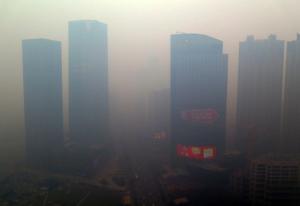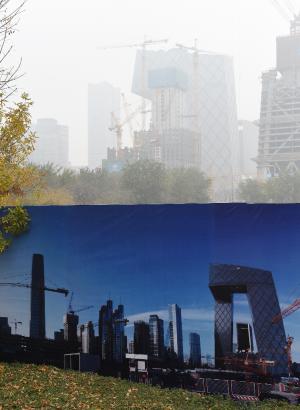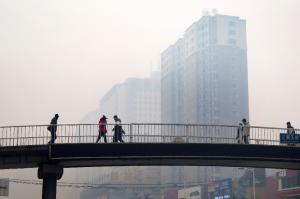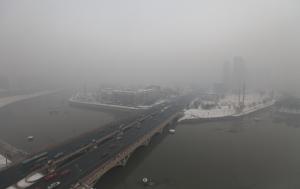A swathe of China was blanketed with acrid smog Monday after levels of dangerous particulates reached around 50 times World Health Organization maximums, in what environmental campaigners said were the highest figures ever recorded in the country.
Pictures showed smog so thick that buildings in Changchun, the capital of Jilin province in the northeast, were rendered invisible.
One image showed a restaurant's neon sign seemingly floating in mid-air above traffic, proclaiming in yellow: “Eastern Dumpling King”.
Levels of PM2.5, the tiny airborne particles considered most harmful to health, reached 860 micrograms per cubic metre in the city of around eight million.
The World Health Organization’s recommended maximum is a 24-hour average of 25 micrograms.
“Today’s haze is pretty severe and choking - when I walked out the door I thought someone’s house was on fire,” said one poster in Changchun on China's Twitter-like Sina Weibo.
China's chronic pollution is generally worse in winter, when power consumption -- much of it fuelled by coal -- rises along with demand for heating to combat the bitter cold.
The scourge has been linked to hundreds of thousands of premature deaths, and has become a major source of popular discontent with the government.
PM2.5 particulates can play a role in heart disease, stroke, and lung ailments such as emphysema and cancer.
Their overall levels reached 1,157 micrograms per cubic metre on Sunday in Shenyang, the capital of the neighbouring province of Liaoning, data from the city's own environmental protection bureau showed.
They peaked as high as 1,400 in parts of Shenyang according to state broadcaster CCTV, with visibility less than 100 metres.
"As far as we are aware from the data we have been observing over the past few years, this is the highest ever PM2.5 level recording" in the country, Greenpeace campaigner Dong Liansai told AFP.
An image circulating online showed a man biking through snow in Shenyang wearing a vintage-looking gas mask, and the official news agency Xinhua quoted a hospital official in the city saying that his respiratory ward had been overwhelmed, with all its beds full.
Online commentators were furious.
"If heating companies dare to buy cheap, low-quality coal and pollute the environment, they should be discovered and immediately shot," said one poster.
- 'Central heating' -
Shenyang's apocalyptic smog was caused by coal use from its public heating system and by heavy pollution blown in from other provinces, city environmental authorities said on a verified social media account.
The explanation provoked derision online.
"Sweden also has central heating – why don't they have haze?" asked one poster.
Xinhua blasted the city's emergency response as “useless” in the face of "such severe haze and pollution", which it said was the heaviest of the year.
Calls made to the environmental protection bureau in Shenyang, where more than eight million people live, went unanswered.
The Changchun city government said on social media Monday that it was initiating a "level three" emergency response, telling schools to stop organising outdoor activities, and reminding residents to stay indoors and "take health precautions", without further specifications.
China used almost 4.3 billion tonnes of coal in 2013, according to the latest official statistics -- in which figures for previous years were revised upwards by hundreds of millions of tonnes.
Beijing has pledged that its emissions of carbon dioxide, the primary greenhouse gas pollutant released from the burning of coal, will peak by "around 2030".
Northeastern provinces such as Jilin and Liaoning do not yet have a coal consumption cap, Greenpeace campaigner Dong said, describing it as "a measure which can rapidly improve air quality".
Last month, the environmental group found that nearly 80 percent of Chinese cities had pollution levels that "greatly exceeded" national standards over the first nine months of this year.
Yet online commentators expressed concerns that governmental attempts to clean up the air would be too little, too late.
"It's like this every year," was a common refrain.
One user wrote: "Environmental pollution has made chronic diseases more and more common; we're becoming the sick man of Asia of the new century."




No comments:
Post a Comment